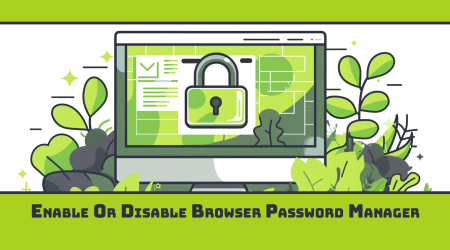Time tracking is one of those things that everyone is expected to know but few really talk about. I saw a discussion about this pop up on reddit this week and while the discussion hasn’t had a ton of interaction just yet, I thought it might be worth to take a closer look at the art of time tracking for IT and some basics on what you should be tracking and why.
Billable Time vs Actual Time
The first issue you’ll bump into is the difference between billable time and actual time. Billable time is the increments in which you bill to your client. Actual time is the time that your techs record that they actually worked on a ticket.
Billable time shows up on invoices to clients, while actual time shows up on time cards in your accounting software.
Even if you are a flat rate IT provider it makes sense to track these numbers. Even though you don’t bill for the time spent, knowing these numbers will give you a deeper understanding of the inner workings of your business.
When I read the thread about minimum time, my mind went directly to “actual time” because I assumed that they meant the time a tech is working a ticket. And, I still believe that is what they meant.
Almost everyone has a minimum for billable time. This isn’t necessarily because companies want to screw their clients out of more money, but more because of the opportunity and hidden costs associated with working a new ticket.
Contrasting, I know of relatively few who have a minimum interval for actual time spent because it is more about tracking the usage of internal resources. Adding a minimum to actual time would likely break your company’s ability to properly compensate your techs.
So lets dive in a little bit more to understand both types of time tracking.
What Network Depot Does
So whenever I postulate about anything IT Business related, my first question goes back to our parent company, Network Depot. What are they doing in their business? These are the numbers I got from Chris:
- The minimum interval for (remote) billable time is 15 Minutes.
- They have no minimum for actual time spent.
When I asked Chris about the reasoning behind this he gave me a few reasons as to why.
Billable Time and Cost
There are three reasons why billable time should have a minimum interval associated with it.
- Accounting and Backoffice Costs
- Scheduling / Time Management Costs.
When it comes to recording time on a ticket, you (or your technicians) often aren’t tracking the time it takes to understand the issue, create/update a ticket, communicate with the client, and reset after fulfilling the request.
For example, let’s say someone calls you with a relatively simple task. They accidentally deleted an icon on their desktop to an app that they often use. You open a ticket while on the call and the timer starts. Unfortunately, the time to this point is probably not recorded.
Lets say it takes roughly 3 minutes and 30 seconds to complete fixing the issue once you begin tracking. The customer is happy and you wrap up the call and move on with your day.
However, while the call is done, you are not. You update the notes and ultimately close the ticket, but now you have to exit out of your remote control software and “reset” for the next task that you have coming up. While this time might be relatively short, the constant spinning up and down between tickets will add up over the course of the day, and this time is often not tracked as actual time.
The accounting and back-office costs are more about the costs associated with invoicing and managing smaller bills. If you only took 3 minutes and 30 seconds to fix the issue, that likely doesn’t amount to much in the way of income.
Let’s assume you have an hourly billable rate of $150 / hour. That’s $2.50 / minute. This means, finding the icon for your client earned you the sweet sum of $8.75. You can ALMOST afford to eat at Chipotle with that kind of cash. Do you really want your accounting team to send out a $8.75 invoice? What if you snail-mail them (gasp!)?
Then there are the credit card fees and the expense of chasing your client down who doesn’t seem to want to pay their invoice this month.
Finally, there is the scheduling and time management costs associated with T&M billing. While the example we gave above really didn’t impact scheduling, often tickets will require you to block out parts of your day. That is time you could have spent earning yourself money in other ways. So you need to make sure you’re compensated properly for the time block you had to cut out from your work day.
This becomes more important on larger issues that can take several hours to work through. You will want to make sure that the edges of those tickets (beginning and ending) are properly accounted for because you might find your techs having a larger spin up and spin down time to handle those issues.
For example, building a new server might require them to clear space in the office to make it happen. It is possible this might not show up as time billed to your client, so having that extra 15 or so minutes on the edge of a ticket helps to pay for that time spent working the ticket.
All of these reasons lead us to why it is best to have a minimum billable time.
So what is a good minimum billable time?
You will probably hear some debate about minimum billable time. I think it ultimately is going to rest on an arbitrary decision from you. Does your company deal with a lot of smaller issues? Increasing the minimum billable time is going to reduce those numbers. But increase it too far and you’ll find your clients will begin to “save up” issues and you’ll find yourself working 3-5 issues at a time.
It also bothers clients when they have to spend a large dollar amount on a seemingly small issue. I have read about IT companies that have a one-hour minimum for remote work. If you rounded up the 3 1/2 min in our icon example to a full hour, how is your client going to feel about paying $150 for that? How would you?
I think the best rule of thumb is 15 minutes or 30 minutes for remote work. They are both easy to understand and easy to increment. Going to an hour minimum is difficult to justify to clients without them thinking you’re just out to get them.
What about on-site minimums? This is probably another blog discussion, because there are many options for this. You clearly can’t go onsite and bill 15 min! At Network Depot, we have a Trip Charge to cover the time and expense of travel time and cost (mileage/parking), and a 1-hour minimum on-site. After the 1-hour, we bill in 15 min increments to be fair.
Actual Time, and why you shouldn’t have minimums.
So if billable time is billed in increments of 15 or 30 minutes, why not match actual time to those numbers?
Well, turns out there are a few reasons. Most of them are accounting based.
While rounding up time spent for billing purposes has a positive effect on your ability to handle smaller issues, rounding up actual time usually has the reverse impact. You may find your Technicians stretch that extra time to chill, check Instagram, or whatever else between tickets. So if you add a minimum of 15 minutes of actual time spent and a tech finishes the ticket in 7, that gives them 8 more minutes to slack off and do whatever they want since their time is already accounted for!
By contrast, if you have no minimums on actual time spent and they go from one ticket to the next then you are going to get a much more clear picture of how much time they are actually spending per day being productive.
As we already established, actual time usually doesn’t account for some of that time between tickets, so rarely would you find a technician be able to bill 8 hours of actual time to tickets on the board. But in theory, they could account for more than 8 hours of billable time since you’re rounding up.
Actual time becomes a metric within your company to assess how productive your team is being. It also becomes a quick way to see if something is wrong. If actual time takes a huge dip, you’ll know that something is off, so you can spot problems faster and find solutions to help your techs remain productive.
What are your thoughts? What do you charge for both remote and on-site minimums? Are you tracking your actual time spent? What does your technician’s productivity look like?
Keep the discussion going!






